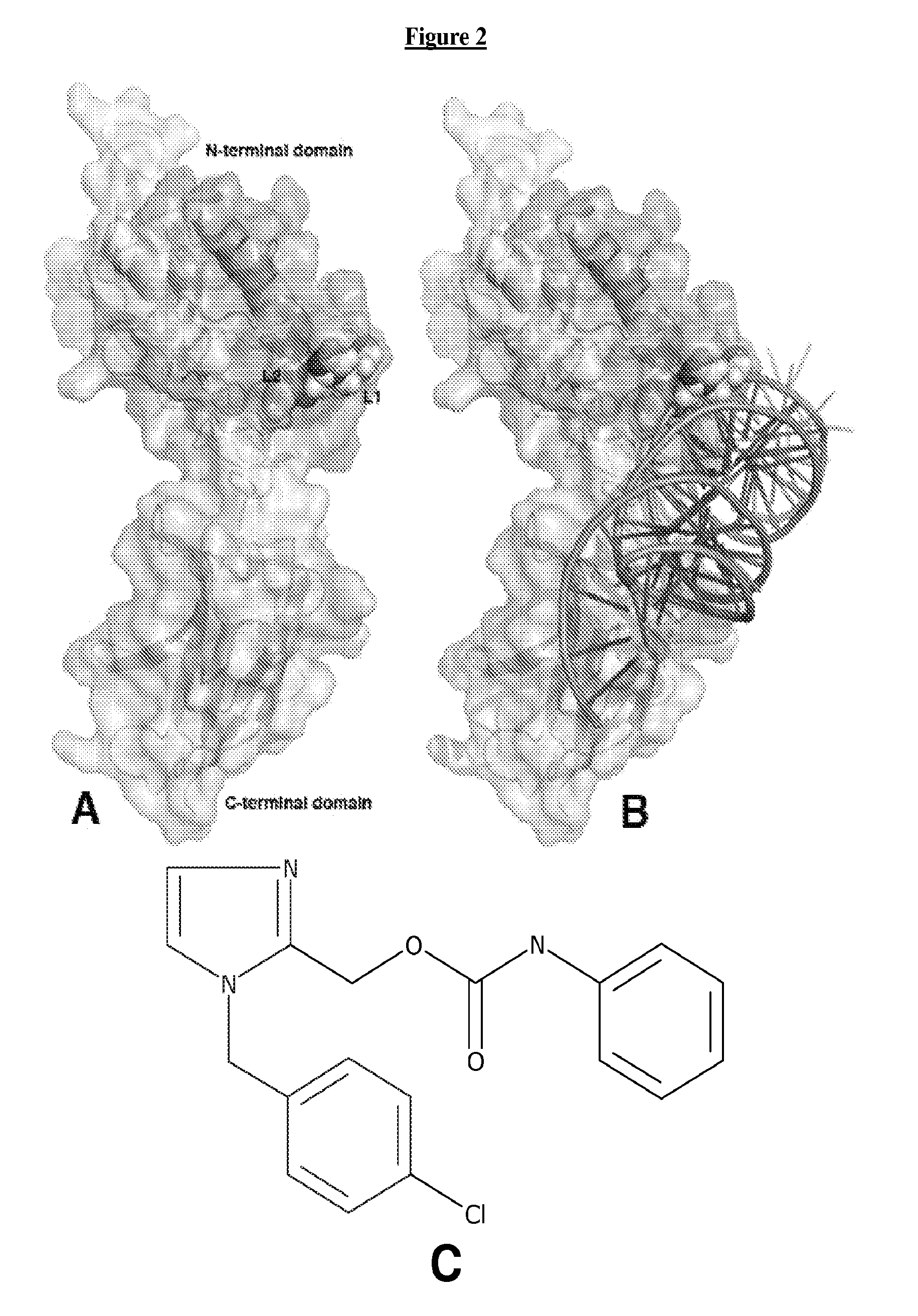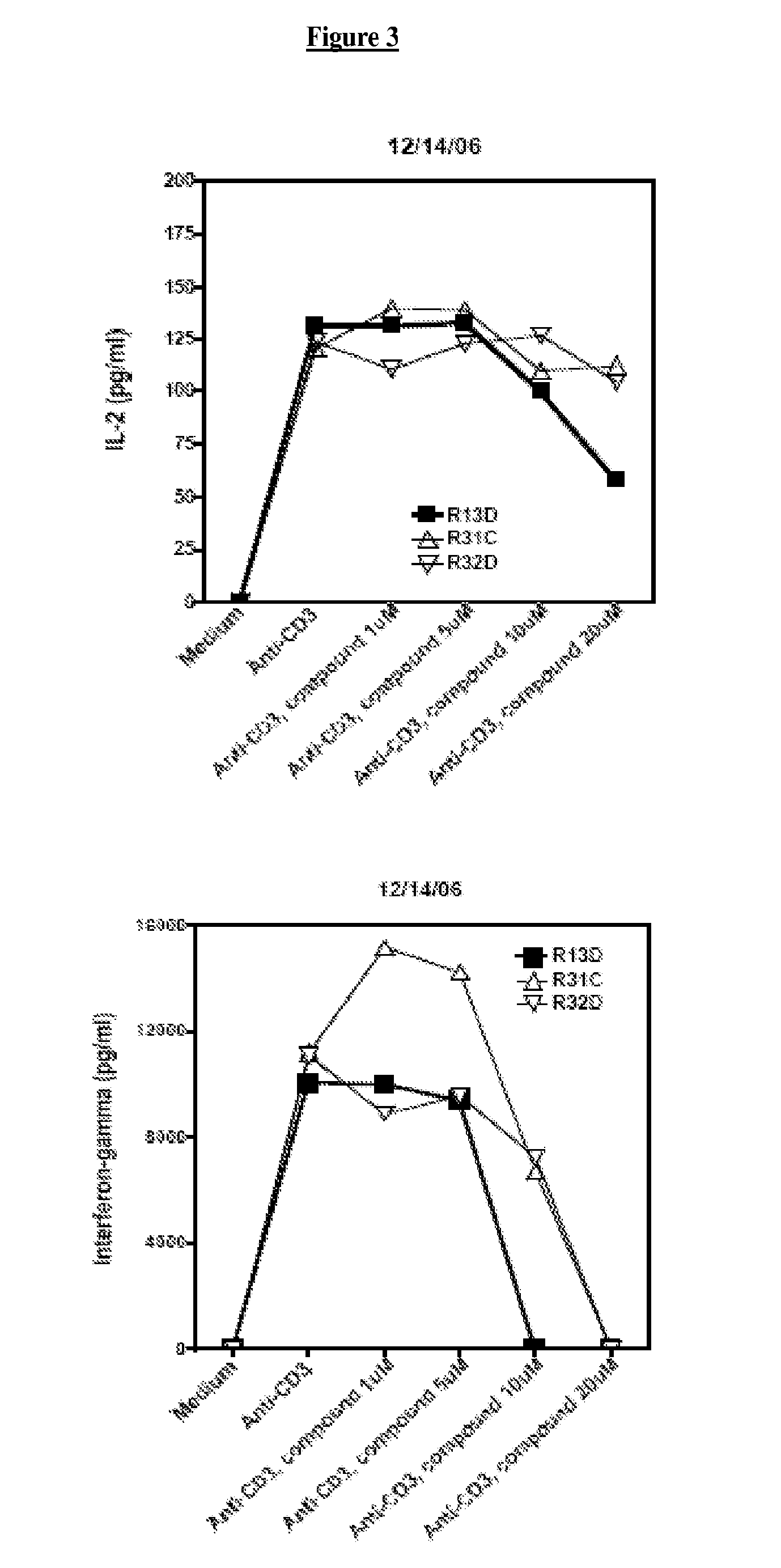Rel inhibitors and methods of use thereof
a technology of receptors and inhibitors, applied in the field of receptor inhibitors, can solve the problems of significant side effects of drugs used for a short period of time to control acute inflammation, and achieve the effect of reducing symptoms
- Summary
- Abstract
- Description
- Claims
- Application Information
AI Technical Summary
Benefits of technology
Problems solved by technology
Method used
Image
Examples
example 1
Treatment of Human Inflammatory Diseases Using c-Rel Inhibitors
[0360]Experimental autoimmune encephalomyelitis (EAE) is an animal model for multiple sclerosis (MS). While the genetic and environmental factors that trigger MS vary, the common pathological outcome of the disease is the destruction of myelin-producing oligodendrocytes and their associated neuronal axons through a process called encephalomyelitis. Development of encephalomyelitis requires coordinated expression of a large number of genes that mediate the activation, migration and effector function of inflammatory cells (activated lymphoid and myeloid cells). These include genes that encode inflammatory cytokines, chemokines, and cytotoxic enzymes. Expression of these inflammatory genes is tightly regulated at the transcriptional level by specific transcription factors. Recent studies indicate that, c-Rel, the lymphoid member of the Rel / nuclear factor-κB (Rel / NF-κB) family, is a long sought-after transcriptional regulato...
example 2
Identification of c-Rel Blockers by Structure-Based Drug Design (SBDD)
[0367]The three-dimensional structure of chicken c-Rel bound to DNA has been determined (See e.g. Example 1). The structural studies show that c-Rel:DNA contacts are mediated by four loops, L1 and L2 loops from the N-terminal domain, and L3 and L4 loops from the C-terminal domain. DNA fragment is sandwiched between these loops. The contact residues are highly conserved across species, including chicken, human and mouse.
[0368]To design drugs that could disable human c-Rel binding to DNA (therefore blocking the biological activity of c-Rel), chicken c-Rel 3-D model was first humanized by replacing chicken residues with their human counterparts. The model was then minimized using the Insight II software (Accelrys, Inc). The minimized model was used to discover small molecule inhibitors that can interfere with the residues in loops L1 and L2. A small druggable cavity was identified using programs available in Insight ...
example 3
c-Rel Blockers Selectively Regulate Cytokine Production but not Survival of T Cells
[0371]To determine whether the c-Rel blockers identified above are effective in regulating inflammatory cell function, splenocytes or purified CD4+ splenic T cells of C57BU6 mice were treated with anti-CD3 and anti-CD28 in the presence of increasing concentrations of the compounds. Cytokine expression was determined by ELISA, flow cytometry or real-time PCR, whereas CD4 expression and cell survival were determined by flow cytometry alone. Of 15 compounds tested to date, including 5 from FP-HTS and 10 from SBDD, at least 10 significantly inhibited IL-2, IL-6, IL-17A, L-21 and / or IFN-g expression but not that of IL-4 and CD4 (which are not c-Rel targets). Eight of these compounds showed no detectable cytotoxicity to either resting or activated splenocytes in the culture. A representative of these compounds, i.e., R96 identified from SBDD, is shown in FIG. 4. The IC50 of R96 for IL-2 inhibition is −5 mM....
PUM
| Property | Measurement | Unit |
|---|---|---|
| volume | aaaaa | aaaaa |
| concentrations | aaaaa | aaaaa |
| concentrations | aaaaa | aaaaa |
Abstract
Description
Claims
Application Information
 Login to View More
Login to View More - R&D
- Intellectual Property
- Life Sciences
- Materials
- Tech Scout
- Unparalleled Data Quality
- Higher Quality Content
- 60% Fewer Hallucinations
Browse by: Latest US Patents, China's latest patents, Technical Efficacy Thesaurus, Application Domain, Technology Topic, Popular Technical Reports.
© 2025 PatSnap. All rights reserved.Legal|Privacy policy|Modern Slavery Act Transparency Statement|Sitemap|About US| Contact US: help@patsnap.com



